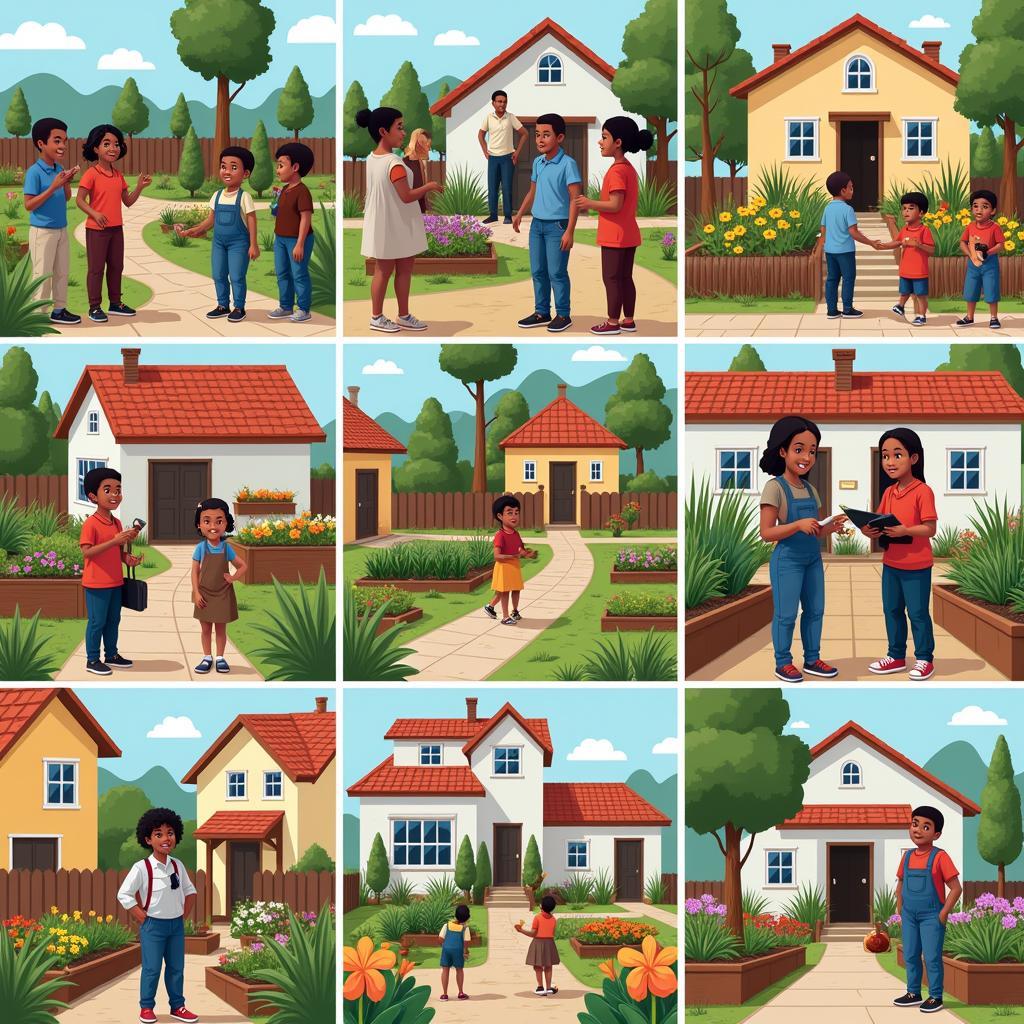The phrase “Chauncey Menace To Society” often evokes images from the 1993 film depicting the struggles of inner-city youth. This article aims to explore the complexities behind this loaded phrase, moving beyond the cinematic portrayal and delving into the societal factors that contribute to perceptions of “menace” and how we can build a more peaceful and inclusive future.
Understanding the Roots of “Menace”
The idea of a “menace to society” isn’t limited to the character of Chauncey. It’s a label often applied to marginalized groups, reflecting societal anxieties and biases. Poverty, lack of opportunity, systemic discrimination, and inadequate education can create a breeding ground for frustration and despair, sometimes manifesting as behaviors deemed threatening. But rather than simply labeling individuals or groups as a “menace,” we must examine the underlying causes that contribute to social unrest and inequality.
Beyond the Stereotype: Fostering Empathy and Understanding
The movie “Menace II Society” offered a glimpse into the lives of young people trapped in a cycle of violence and poverty. However, it’s crucial to remember that this is just one story, and it doesn’t represent the entirety of any community. Instead of allowing stereotypes to dictate our perceptions, we must actively seek to understand the diverse experiences and perspectives of individuals often labeled as a “menace.” menace to society chauncey offers further insights into this topic.
Empathy is key to breaking down barriers and fostering genuine connection. By listening to the stories of those who have been marginalized, we can gain a deeper understanding of their struggles and challenges. This understanding can lead to compassion and a desire to create a more just and equitable society.
 Building Bridges Through Empathy
Building Bridges Through Empathy
Breaking the Cycle: Investing in Community and Opportunity
Addressing the root causes of social unrest requires a multi-faceted approach. Investing in education, creating job opportunities, providing access to mental health services, and fostering community development initiatives are crucial steps towards building a more peaceful and inclusive society. When individuals have access to resources and support, they are empowered to make positive choices and contribute meaningfully to their communities.
menace to society chauncey explores the importance of community-based solutions in addressing social challenges.
What are the long-term effects of labeling individuals as a “menace to society”?
Labeling individuals as a “menace to society” can have devastating long-term consequences, perpetuating stigma, limiting opportunities, and reinforcing negative self-perceptions.
How can we challenge negative stereotypes and promote positive representations of marginalized communities?
Challenging negative stereotypes requires conscious effort to amplify diverse voices, showcase positive stories, and promote accurate and nuanced portrayals of marginalized communities in media and popular culture.
What role does education play in breaking down barriers and promoting understanding between different groups?
Education plays a vital role in fostering critical thinking, promoting intercultural understanding, and challenging prejudiced beliefs, empowering individuals to become agents of positive change.
Dr. Anya Sharma, a renowned sociologist, emphasizes, “Labeling individuals as a ‘menace’ is a dangerous oversimplification that ignores the complex social factors at play.”
 Investing in Community Development
Investing in Community Development
Building a Future of Peace: Moving Beyond “Menace to Society”
The concept of “chauncey menace to society” serves as a reminder of the urgent need to address systemic inequalities and create a society where everyone has the opportunity to thrive. By shifting our focus from labeling individuals to understanding and addressing the root causes of social unrest, we can build a future of peace and inclusivity for all. menace to society chauncey provides additional resources and information on building a more peaceful world.
In conclusion, moving beyond the “menace to society” narrative requires a collective commitment to empathy, understanding, and action. By investing in our communities and creating opportunities for all, we can build a more just, equitable, and peaceful future where everyone has the chance to reach their full potential.
FAQ
- What is the origin of the phrase “menace to society”?
- How does the film “Menace II Society” contribute to the understanding of social issues?
- What are some effective strategies for promoting peace and understanding between different groups?
- How can communities address the root causes of social unrest and violence?
- What resources are available to support individuals and communities affected by social inequality?
- What are some examples of successful community-based initiatives that have contributed to positive social change?
- How can individuals contribute to building a more peaceful and inclusive society?
Common Scenarios:
- Scenario 1: A young person from a marginalized community struggles to find employment due to lack of opportunities and prevailing stereotypes.
- Scenario 2: A community experiences increased tensions due to perceived threats from a specific group, leading to discrimination and prejudice.
- Scenario 3: A school implements a program to promote intercultural understanding and address bullying and discrimination among students.
Related Questions and Resources:
- How can we address the issue of systemic racism and its impact on communities?
- What are the benefits of restorative justice practices in promoting healing and reconciliation?
- Explore our article on “Building Bridges: Fostering Interfaith Dialogue for Peace.”
For further support and information, please contact us: Phone: 02043854663, Email: [email protected], or visit our address: Khu 34, Bac Giang, 260000, Vietnam. Our customer service team is available 24/7.